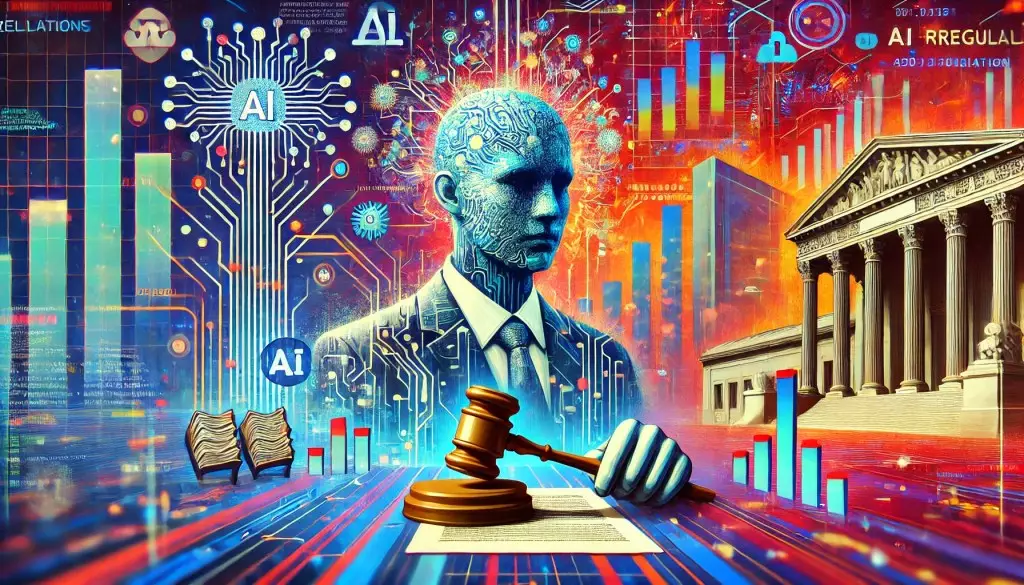The artificial intelligence (AI) sector is at a pivotal point, with the recent hearing at the Senate Committee on Commerce, Science and Transportation showcasing the urgent need for a strategic approach towards its development. The dynamics have notably shifted since the Trump administration decided to retract an Executive Order from former President Joe Biden, which laid down foundational regulations for AI technology. This retreat signals a more laissez-faire attitude towards AI, raising critical questions about the implications for both innovation and competition on the global stage.
Leaders from major tech companies, including OpenAI’s Sam Altman and Microsoft’s Brad Smith, gathered to emphasize the urgency of creating a conducive environment for building the infrastructure necessary to support AI’s exponential growth. Their insistence on streamlined permitting processes for building essential facilities like data centers and power plants indicates a growing recognition that time is of the essence in establishing a robust AI “Tech Stack.” The consolidated voices of these tech magnates underscore a common theme: to retain technological supremacy against emerging competitors, particularly China, America must double down on its development capacity.
The Call for Infrastructure and Skilled Workforce
Fostering a thriving AI ecosystem hinges on creating an expansive and functional infrastructure. Executives at the hearing articulated a pressing demand for not only advanced data facilities but also skilled labor. The conversation touched on the need for electricians and software talent, revealing an industry increasingly reliant on specialized skills that may be bottlenecked by current immigration policies.
Sam Altman’s vision of an era characterized by “abundant intelligence and abundant energy” serves to highlight the interdependence between infrastructural capability and AI’s future impact on society. Altman, fresh from witnessing the progress at OpenAI’s $500 billion Stargate project in Texas, stressed that America’s leadership in AI is contingent on enhancing energy production alongside computational resources. Such growth narratives pose a broader question: how will we establish a collaborative framework both nationally and internationally to harness this dual revolution effectively?
The Drive for Innovation and Market Dynamics
Microsoft’s Brad Smith pointed out that the advancement of AI technology cannot be accomplished in isolation; it requires a market that encourages collaboration and innovation across various sectors. His comments introduce the complex concept of the “AI Tech Stack,” visualizing how every element of this ecosystem is intertwined and crucial for fostering fresh ideas.
AMD’s CEO, Lisa Su, echoed this sentiment by emphasizing the necessity for open ecosystems that welcome diverse innovations from within the U.S. and beyond. The discussion illuminated an essential truth: to maintain global leadership, the United States must reduce barriers to entry for new players in the AI space, enhance competition, and secure its position on the global stage.
However, for the AI landscape to remain vibrant and competitive, there are obstacles that need addressing. The Chips and Science Act, intended to bolster semiconductor production, encounters challenges of its own as companies struggle to ramp up the production of GPUs necessary for training sophisticated AI models. This critical supply chain issue highlights the pressing need for effective policies that nurture domestic manufacturing capabilities.
Global Outreach and Collaboration
A striking observation made during the Senate hearing was the tension between domestic growth strategies and the fervent need for international collaboration. While many Republican policymakers in the Senate lean towards a non-regulated market approach to AI, tech leaders quickly pointed out that securing global talent and forming strategic ties with foreign markets are paramount for the U.S. to thrive in this sector.
To facilitate AI diffusion— a term that signifies the broad adoption of AI technologies across industries—American companies must craft policies that welcome international partnerships. As Smith articulated, “Our global leadership relies on our ability to serve the world with the right approach and on our ability to sustain the trust of the rest of the world.” This call for a more open international stance on AI trade is poignant, especially as other nations reevaluate their failed AI policies and seek inspiration from American innovation.
The Balancing Act of Regulation and Innovation
The executives’ call for thoughtful government standards without rigid pre-approval processes for new models underscores a delicate balancing act: fostering innovation while ensuring responsible deployment. Observers of the hearing noted the irony in some executives’ previous stances on regulation and how their current calls for a flexible framework may signal a shift towards pragmatism in a rapidly evolving tech landscape.
As AI competes with the internet and social media for regulatory scrutiny, it becomes essential to reflect on how these technologies have shaped society. The unique attributes of AI warrant careful consideration in crafting regulations that ensure safety without stifling progress. It’s a nuanced dance between encouraging technological advancements and safeguarding against potential misuse.
The Senate hearing ultimately illuminated an undeniable truth: America stands at a critical crossroads regarding AI’s trajectory. The call for infrastructure, skilled labor, and global collaboration reflects a profound understanding that the future of AI is intertwined with collective action, both domestically and internationally. The time is now for stakeholders across industries and governments to engage deeply in dialogues that foster a robust, ethical, and pioneering AI landscape.

